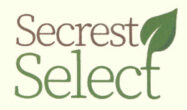Recommending Plants for Secrest Selects
Secrest Select is a program co-sponsored by The Ohio State University’s Secrest Arboretum and the Friends of Secrest Arboretum, a 501(c)(3) whose mission is to support Secrest Arboretum.
Everyone is welcome to recommend plants to be included in the program. Selection criteria and methods can be found below. It is important to understand the selection criteria, including the years the plant has been successful at Secrest Arobretum.
Recommendations are due by September 15. They can be submitted using this online form, or by completing the printable PDF and sending it via email to SecrestSelect@gmail.com, or mailing the form to: FSA, 3540 Burbank Rd., #190, Wooster, OH 44691
Email questions to SecrestSelect@gmail.com
RECOMMENDATION FORM
Selection Criteria & Methods
Plants eligible for Secrest Select designation must exhibit noteworthy performance* within Secrest Arboretum’s plant collection for a minimum of 20 years (trees), 10 years (shrubs and vines), or 5 years (herbaceous perennials and groundcovers). Locally annual and biennial plants will not qualify for inclusion at this time. The following definitions will be used for each plant category:
Tree – A perennial woody plant having one or multiple stems and expected to reach a mature height of at least 20 feet.
Shrub – A perennial woody or semi-woody plant having multiple stems and expected to reach a mature height of less than 20 feet; includes “die back” shrubs such as Buddleja, Callicarpa, and Vitex.
Vine – A perennial woody or semi-woody plant characterized by a climbing, twining, or clinging growth habit.
Herbaceous perennial – A plant characterized by a persistent, cold hardy root system and non-woody shoots that develop consistently from year to year.
Groundcover – A woody, semi-woody, or herbaceous plant persisting for more than 5 years having a mature height of less than 1 foot and a primarily rhizomatous, stoloniferous, or otherwise horizontally spreading growth habit.
*The primary criteria determining noteworthy performance are:
- Relative ease of cultivation, management, and care
- Tolerance of drought, heat, cold (minimum USDA Zone 6A) and other adverse climatic or abiotic environmental factors
- Ornamental characteristics in multiple seasons
- Useful, functional, or ecological benefits in at least one season
- Non-invasive and show no potential for invasiveness
- Reasonably available in local horticultural commerce, at Secrest plant sales, or via reputable mail order nurseries
To determine how long a plant has been at Secrest, use the Secrest Arboretum Explorer at: https://secrest.arboretumexplorer.org/. Enter either the common or Latin name and click the red Search button. For example, Sweetgum returns the straight species and more than ten cultivars. Clicking the straight species (the first entry) will return a list of about 20 accessioned plants. Each will have an accession number such as Accession: S1957-0027*02 where 1957 is the year the plant was acquired. Some will have S1000 which means there are no records for the accession. If you enter Winter Jasmine, you will find two records with accession numbers starting with S2020-0380. As these are shrubs, they would not be eligible for recommendation until 2030.
